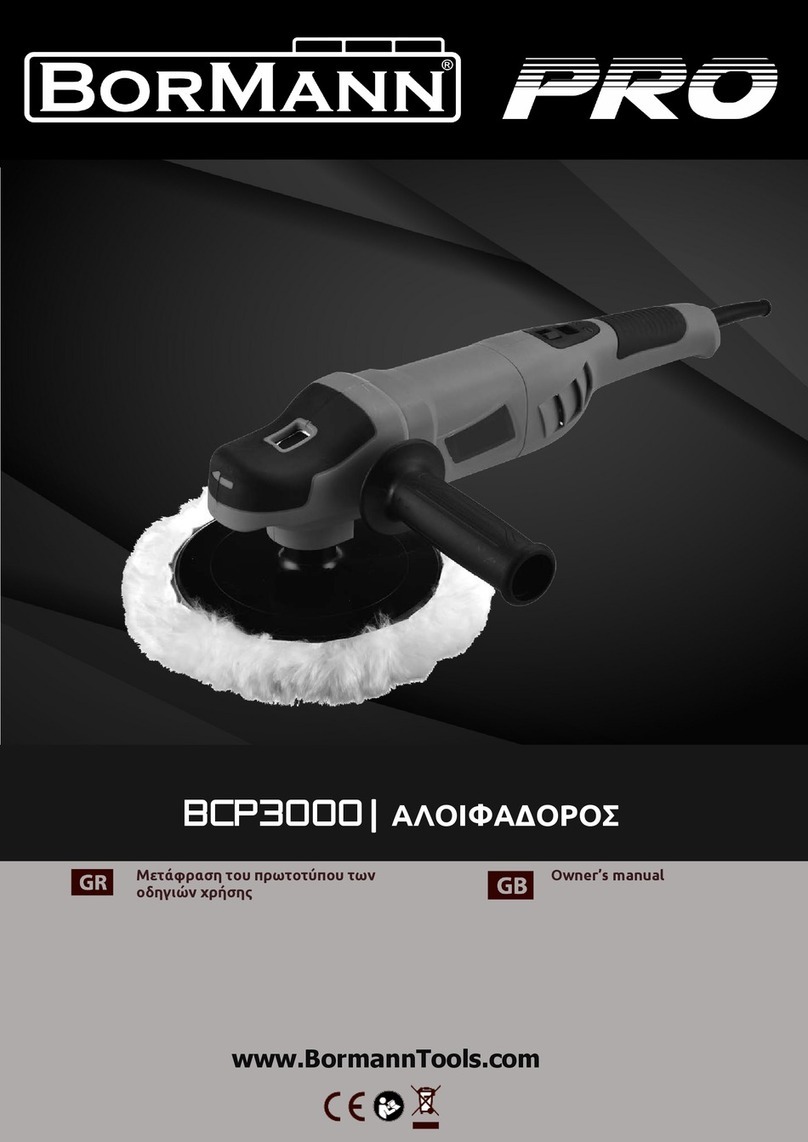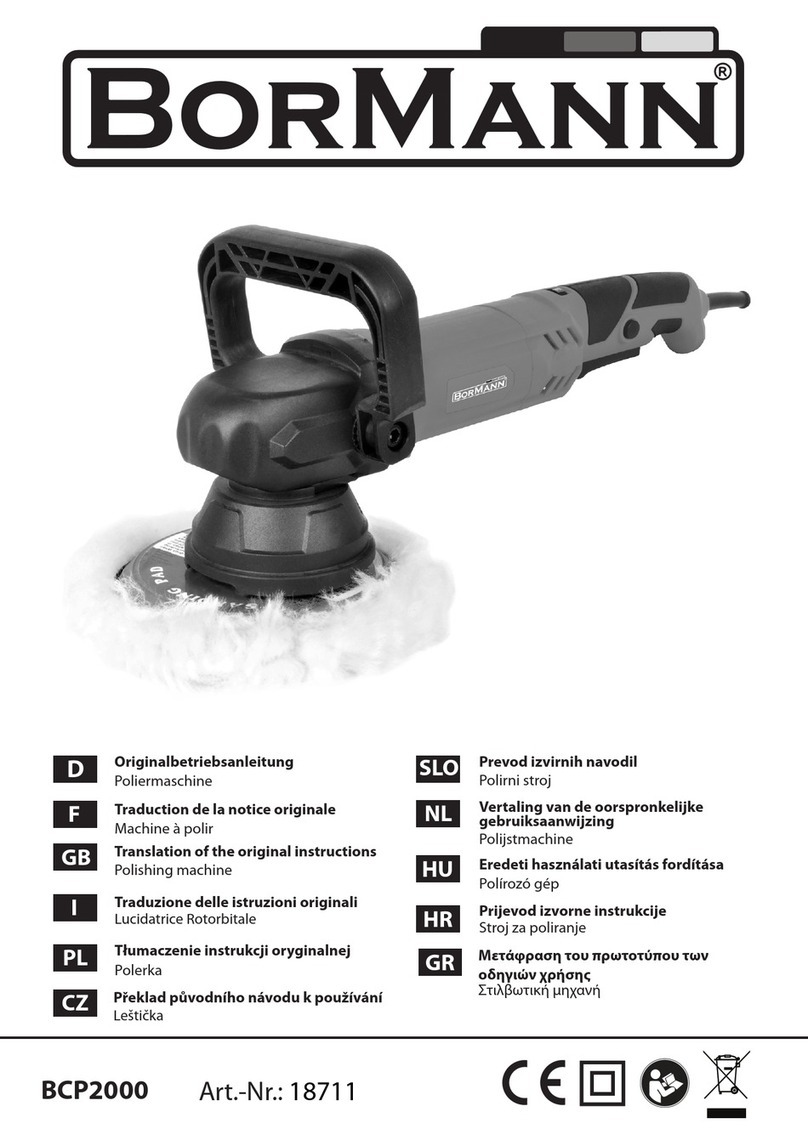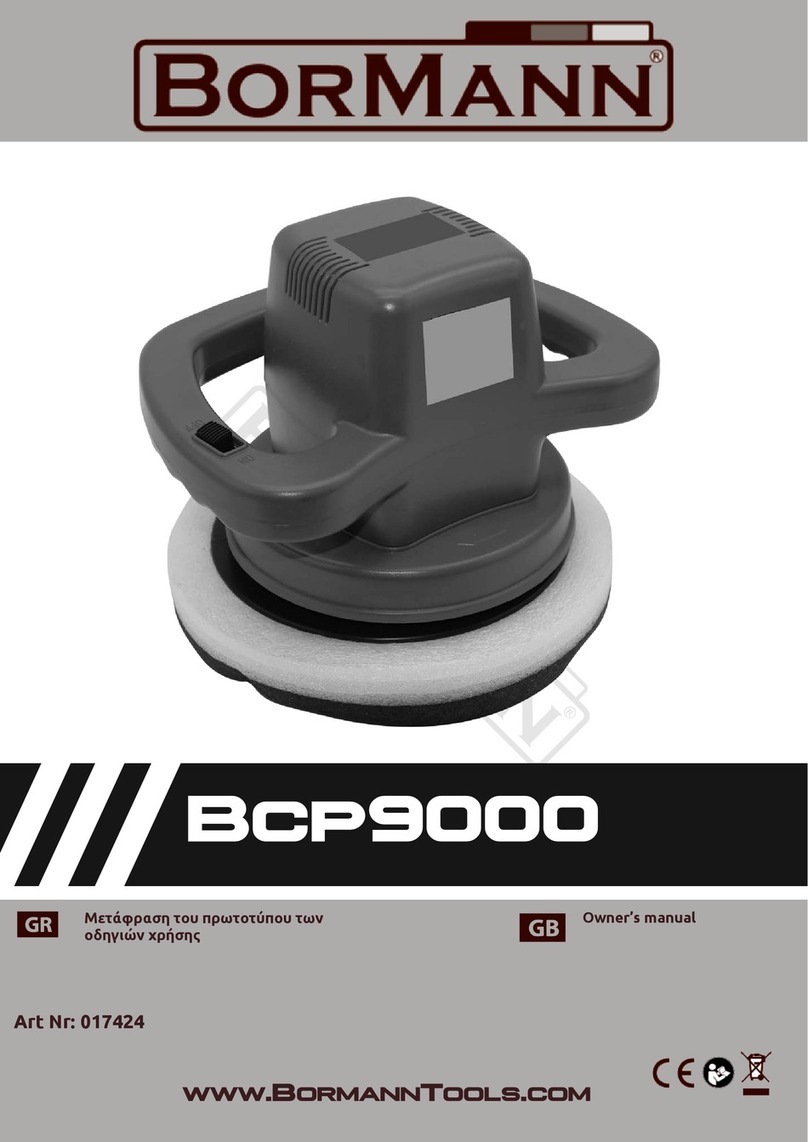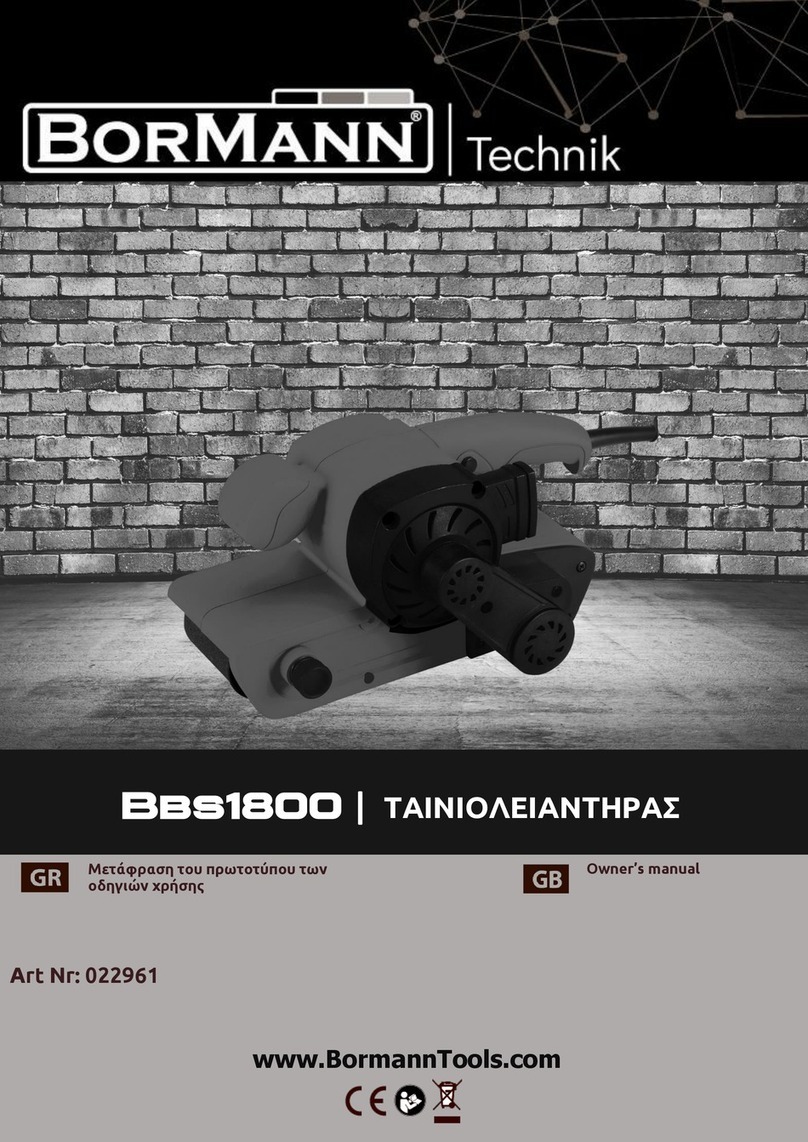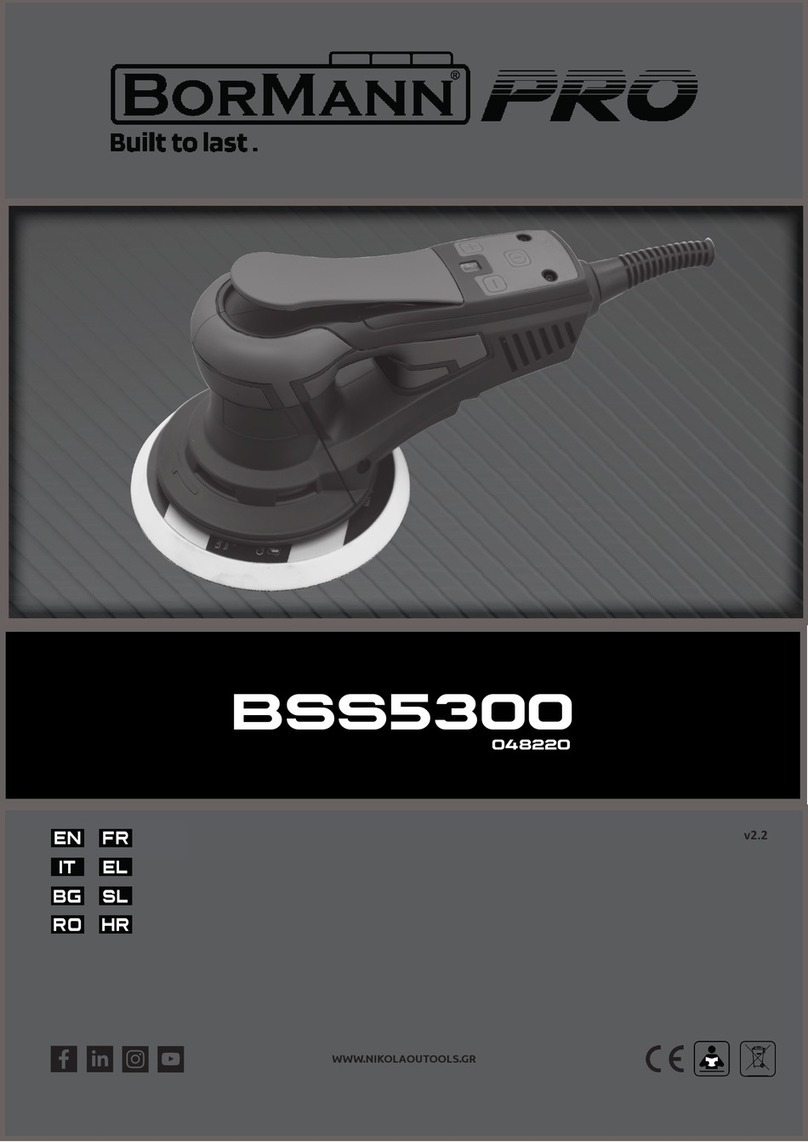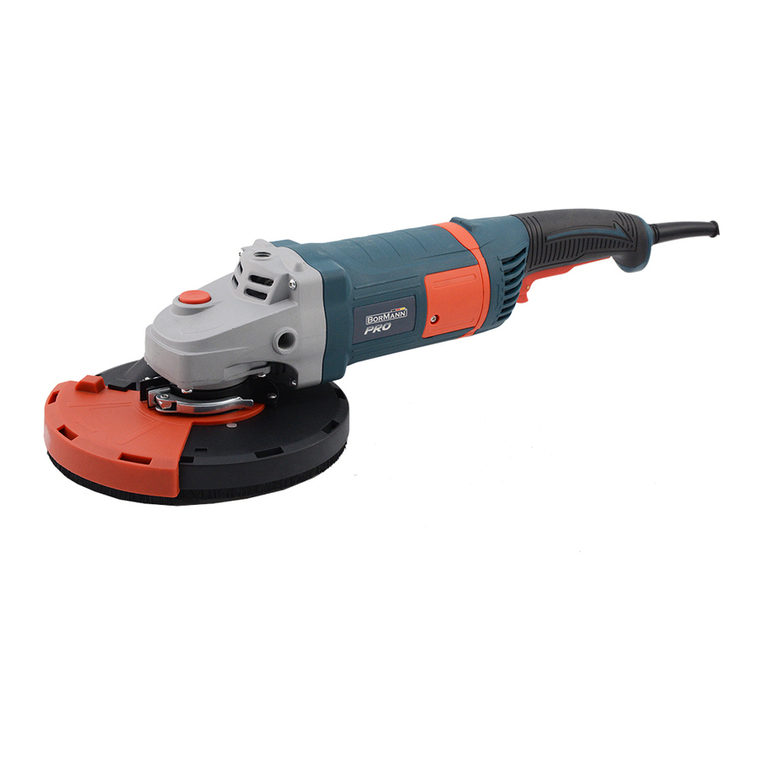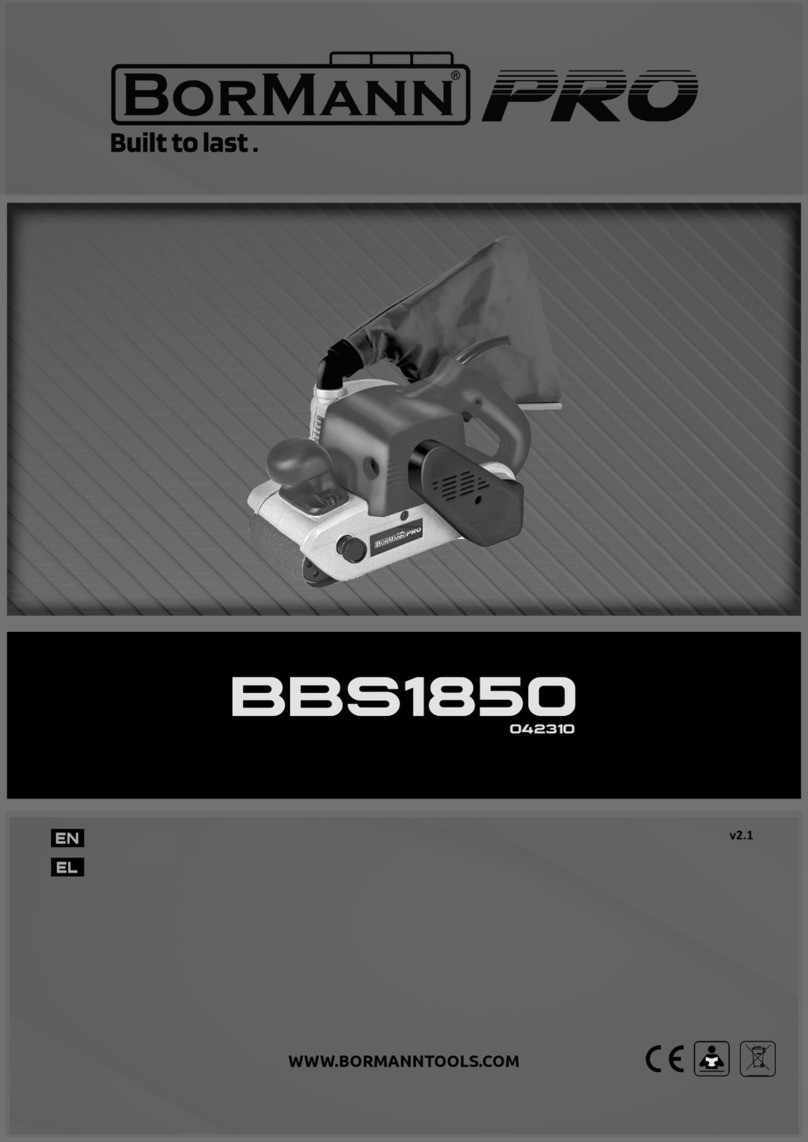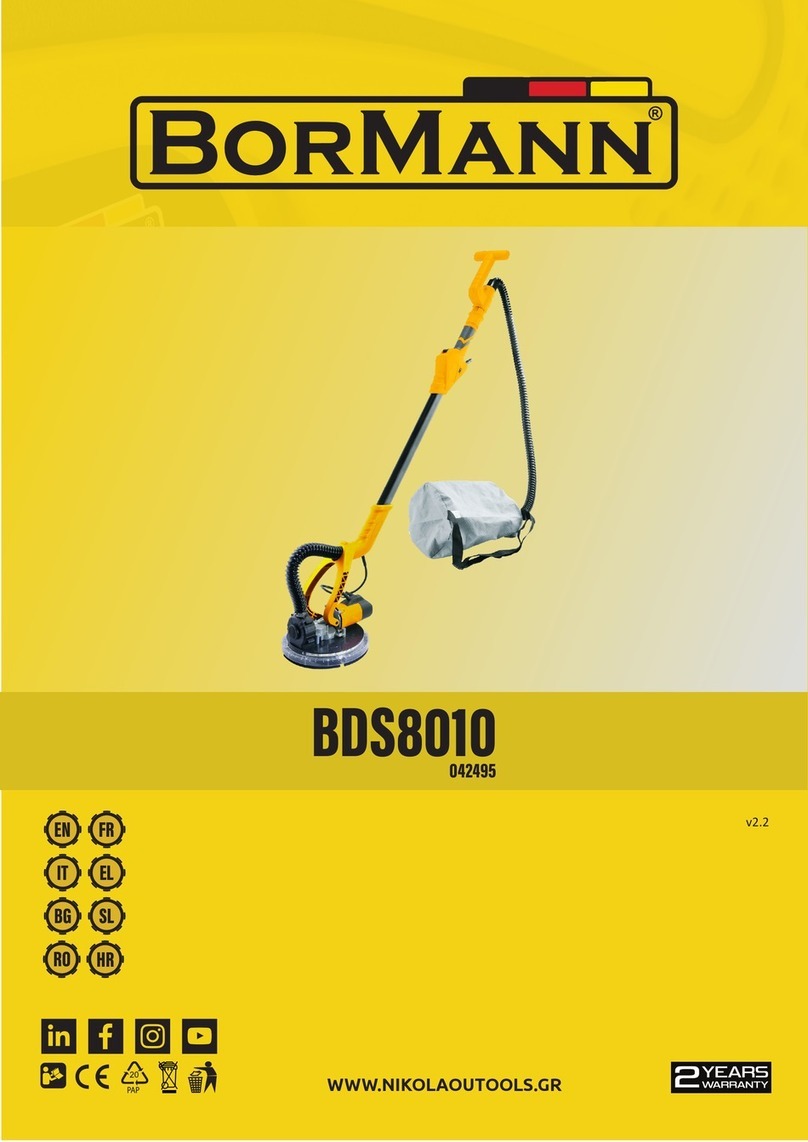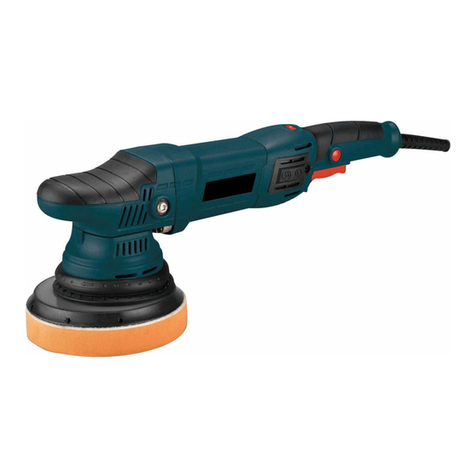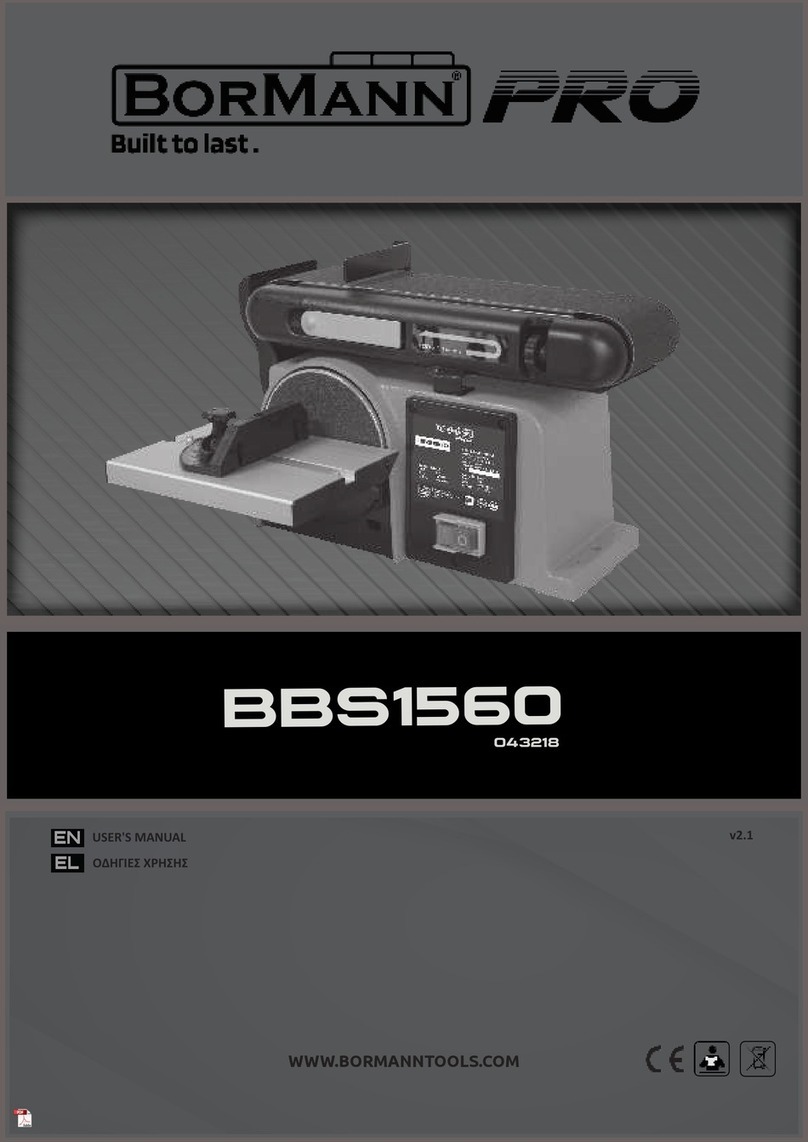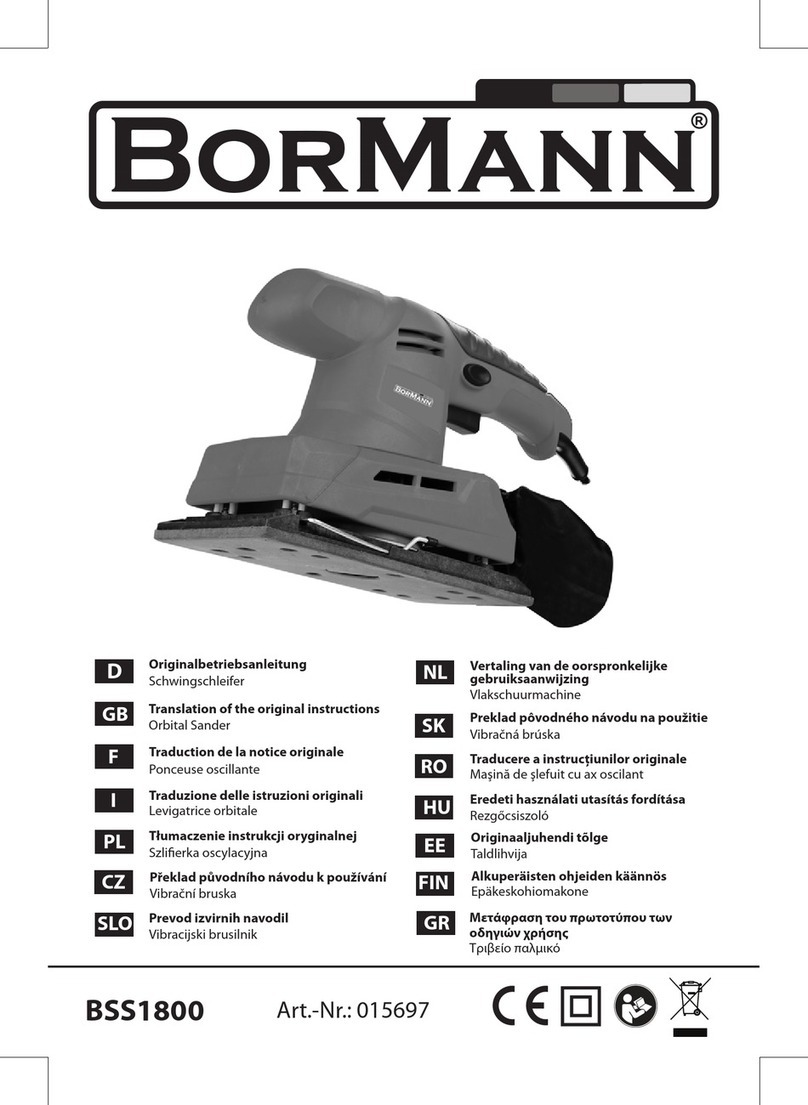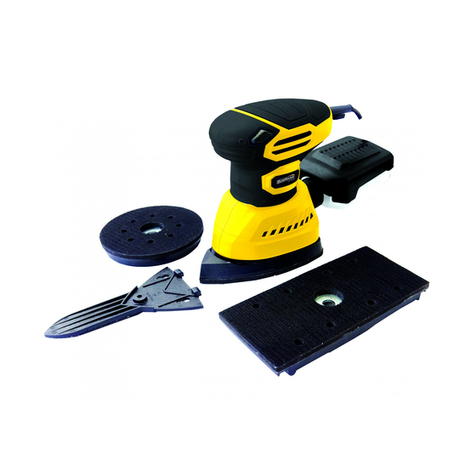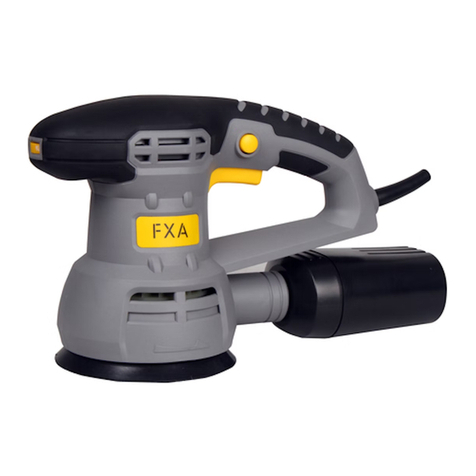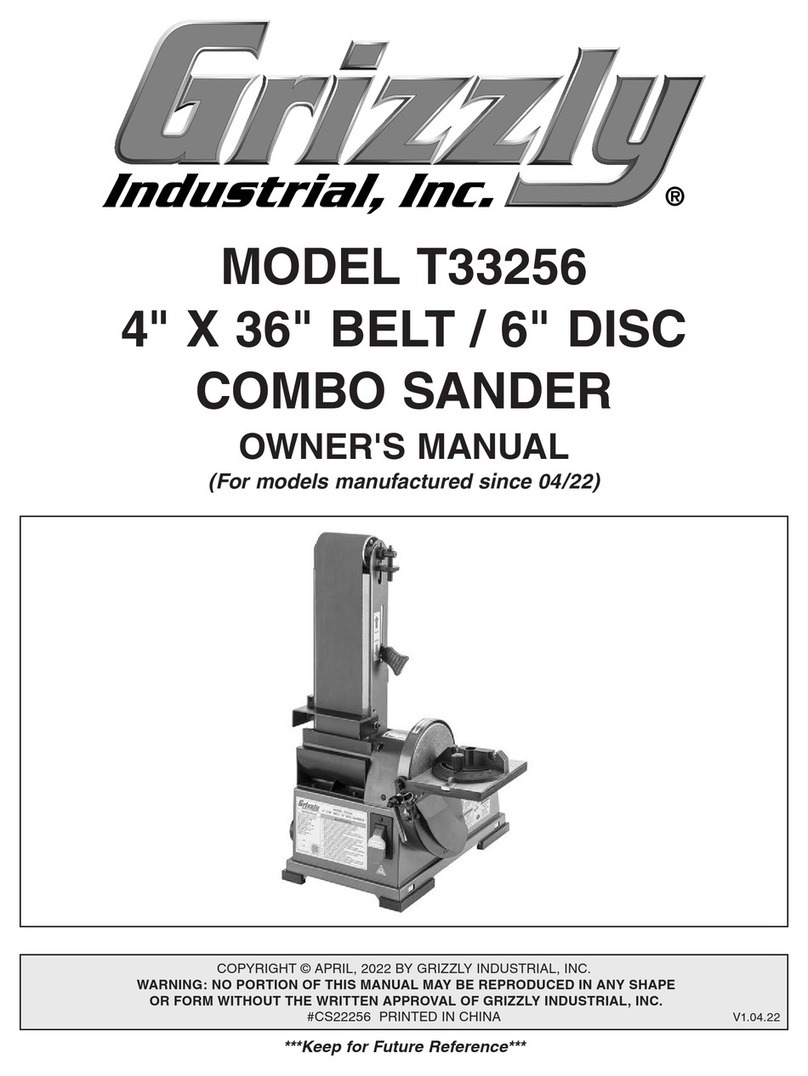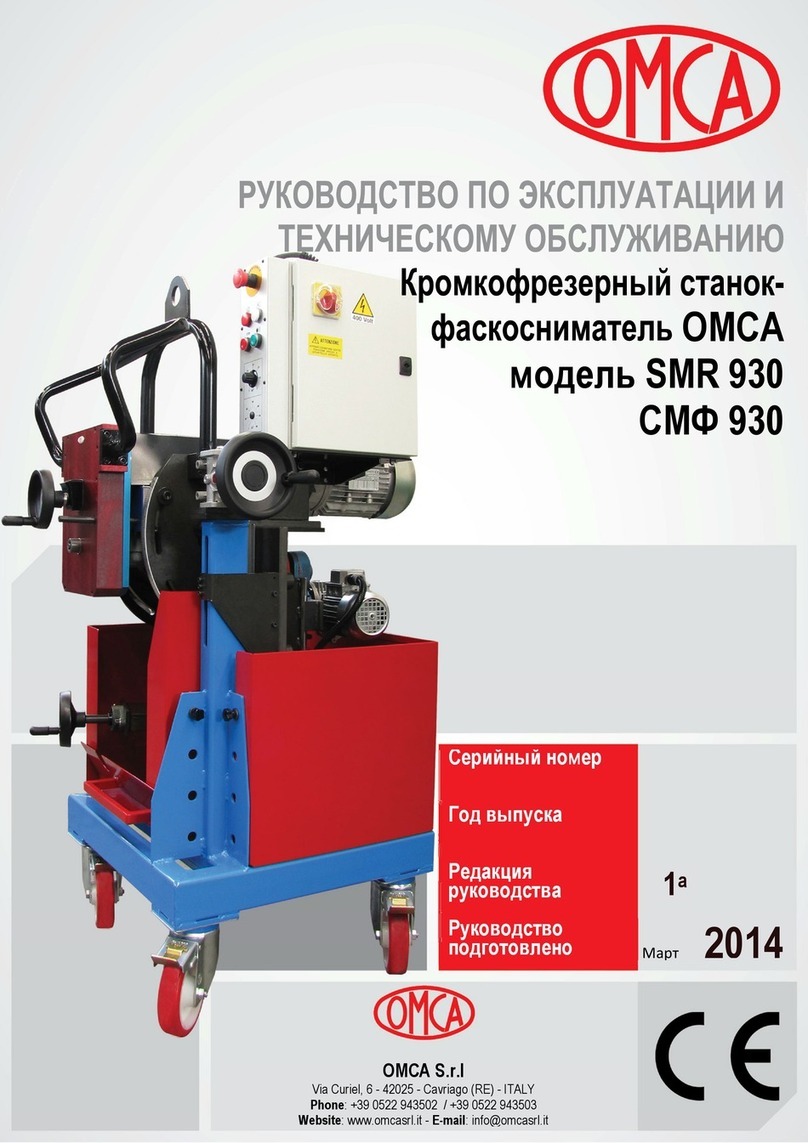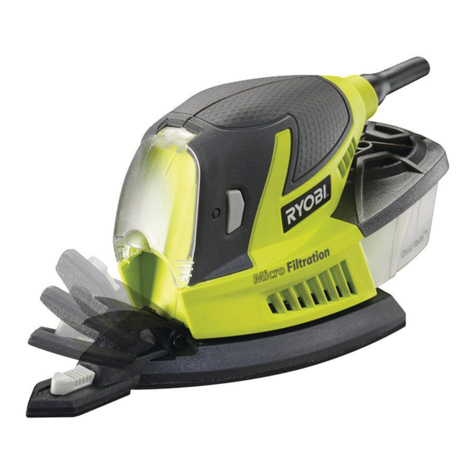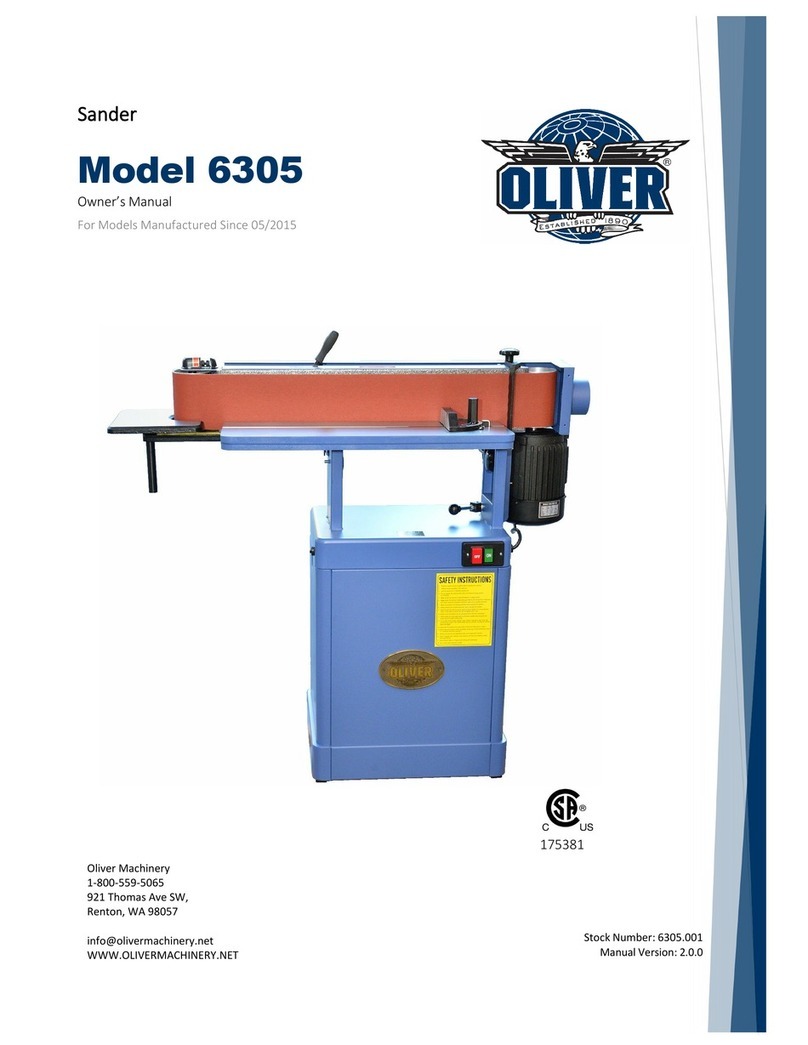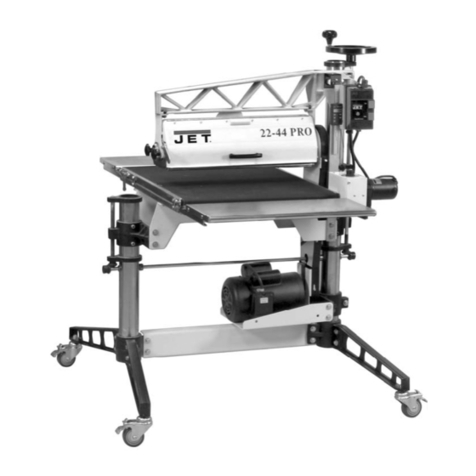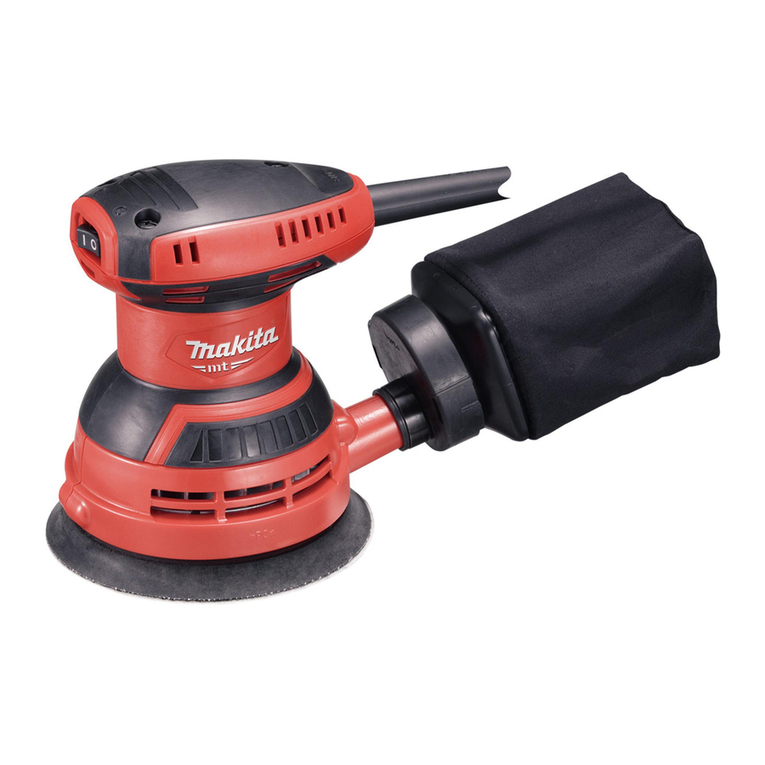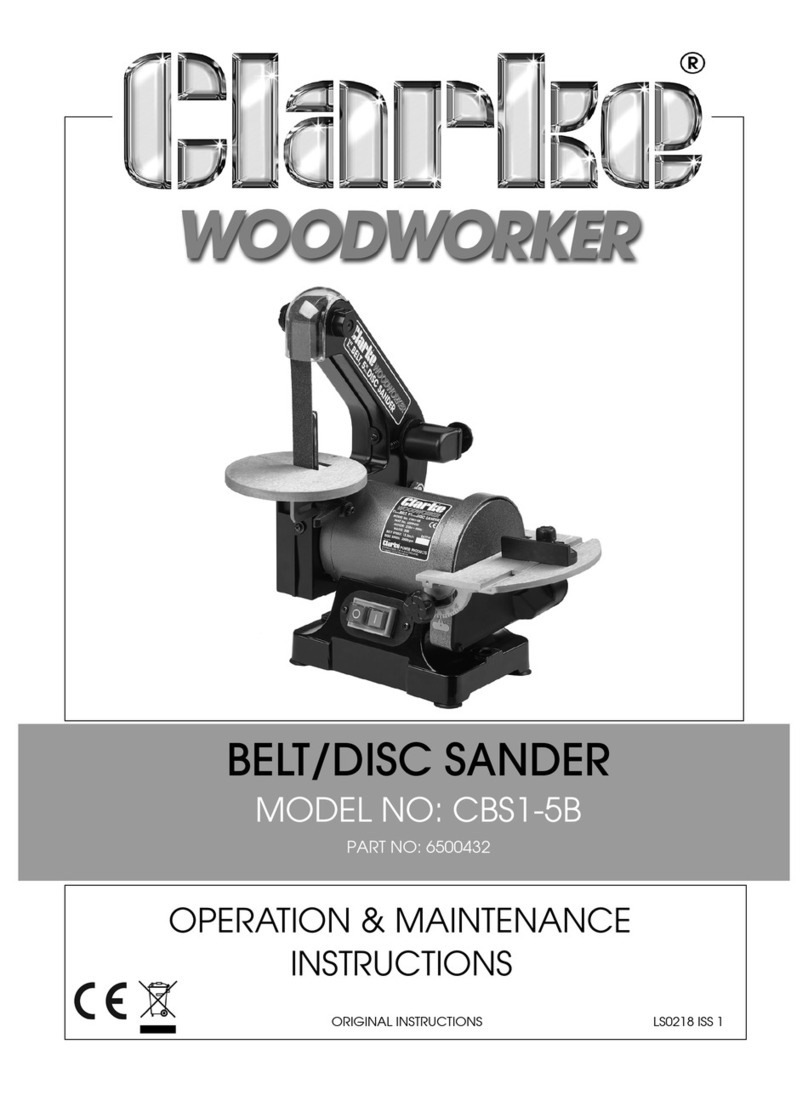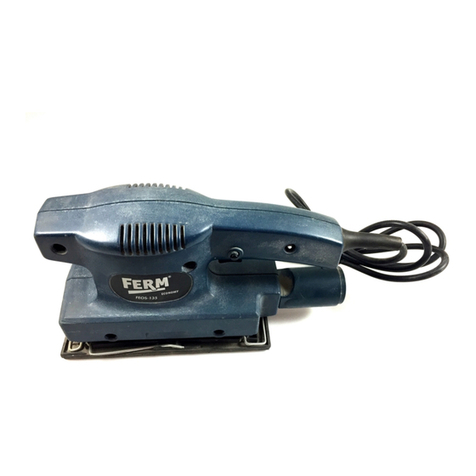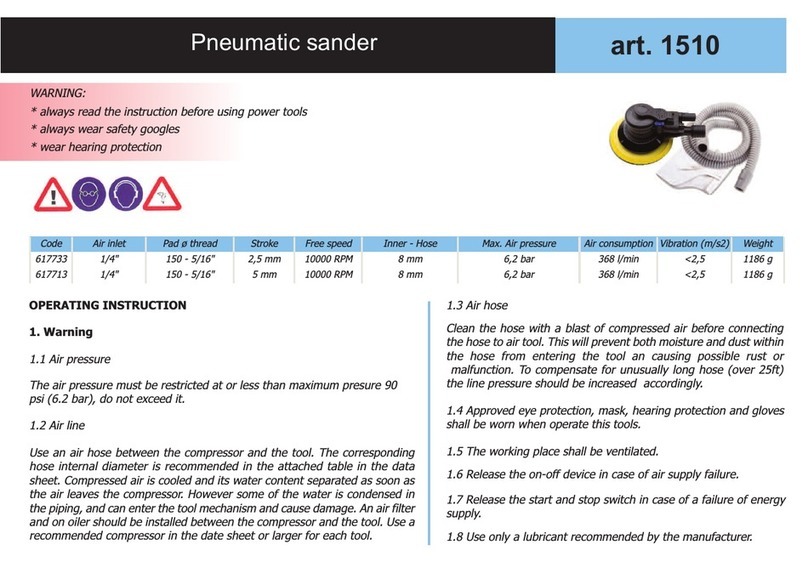
5
The sander is intended for dry sanding of wood, plasc, metal, as well as coated surfaces. sanders with electronic control are
also suitable for polishing. The power tool is not suitable for staonary usage.
Machine-Specic Safety Warnings
Intended Use
Power Tool Use And Care
a) Please do not force the power tool. Use the correct power tool for the each applicaon. The correct power tool will always
do the job beer and safer when used at the rate for which it was designed.
b) Do not use the power tool if the switch does not turn acvate or deacvate it. Any power tool that cannot be controlled with
the switch is extremely dangerous and must be repaired.
c) Disconnect the main plug from the power source and/or the baery pack from the power tool before changing accessories,
making any adjustments, or storing power tools. Such prevenve safety measures will reduce the risk of starng the power tool
accidentally.
d) Store idle power tools out of the reach of children and do not allow persons unfamiliar with the power tool or these
instrucons to use and operate the power tool.
Power tools are extremely dangerous in the hands of untrained users.
e) Maintain power tools. Check for misalignment or binding of moving parts, breakage of parts, leakage and any other condion
that may aect the power tool’s operaon. If damaged, please have the power tool repaired before use. Many accidents and
injuries are caused by poorly maintained power tools.
f) Keep all the cung tools sharp and clean. Properly maintained cung tools with sharp cung edges are less likely to bind
and are more precise and easier to control.
g) Always use the power tool, accessories and tool bits etc. in accordance with the instrucons of this instrucon manual, taking
into account the working condions and the work to be performed.
Use of the power tool for applicaons dierent from those intended could result in a hazardous situaon.
Service
a) Have your power tool serviced by a qualied repair technician using only idencal replacement parts. This will ensure that
the safety of the power tool is maintained.
a) Use the sander only for dry sanding. Penetraon of water into the sander increases the risk of an electric shock.
b) Pay aenon that no persons are put at risk through sparking. Remove any combusble materials in the vicinity. Sparking
occurs when sanding metal materials.
c) Cauon, re hazard! Avoid overheang the object being sanded as well as the sander. Always empty the dust collector before
taking breaks. In unfavourable condions, e. g., when sparks emit from sanding metals, sanding debris in the dust bag, micro
lter or paper sack (or in the lter sack or lter of the vacuum cleaner) can self-ignite. Parcularly when mixed with remainders
of varnish, polyurethane or other chemical materials and when the sanding debris is hot aer long periods of working.
d) When working with the sander, always hold it rmly with both hands and provide for a secure stance. The power tool is
guided more secure with both hands.
e) Secure the workpiece. A workpiece clamped with clamping devices or in a vice is held more secure than by hand.
Vibraon Safety
This tool vibrates during use.
Repeated or long-term exposure to vibraon may cause temporary or permanent physical injury, parcularly to the hands, arms
and shoulders. To reduce the risk of vibraon-related injury:
1. Anyone using vibrang tools regularly or for an extended period should rst be examined by a doctor and then have regular
medical check-ups to ensure medical problems are not being caused or worsened from use. Pregnant women or people who
have impaired blood circulaon to the hand, past hand injuries, nervous system disorders, diabetes, or Raynaud’s Disease
should not use this tool. If you feel any symptoms related to vibraon (such as ngling, numbness, and white or blue ngers),
seek medical advice as soon as possible.
2. Do not smoke during use. Nicone reduces the blood supply to the hands and ngers, increasing the risk of vibraon-related
injury.
3. Wear suitable gloves to reduce the vibraon eects on the user.
4. Use tools with the lowest vibraon when there is a choice.
5. Include vibraon-free periods each day of work.
6. Grip tool as lightly as possible (while sll keeping safe control of it). Let the tool do the work.
7. To reduce vibraon, maintain the tool as explained in this manual. If any abnormal vibraon occurs, stop use immediately.
